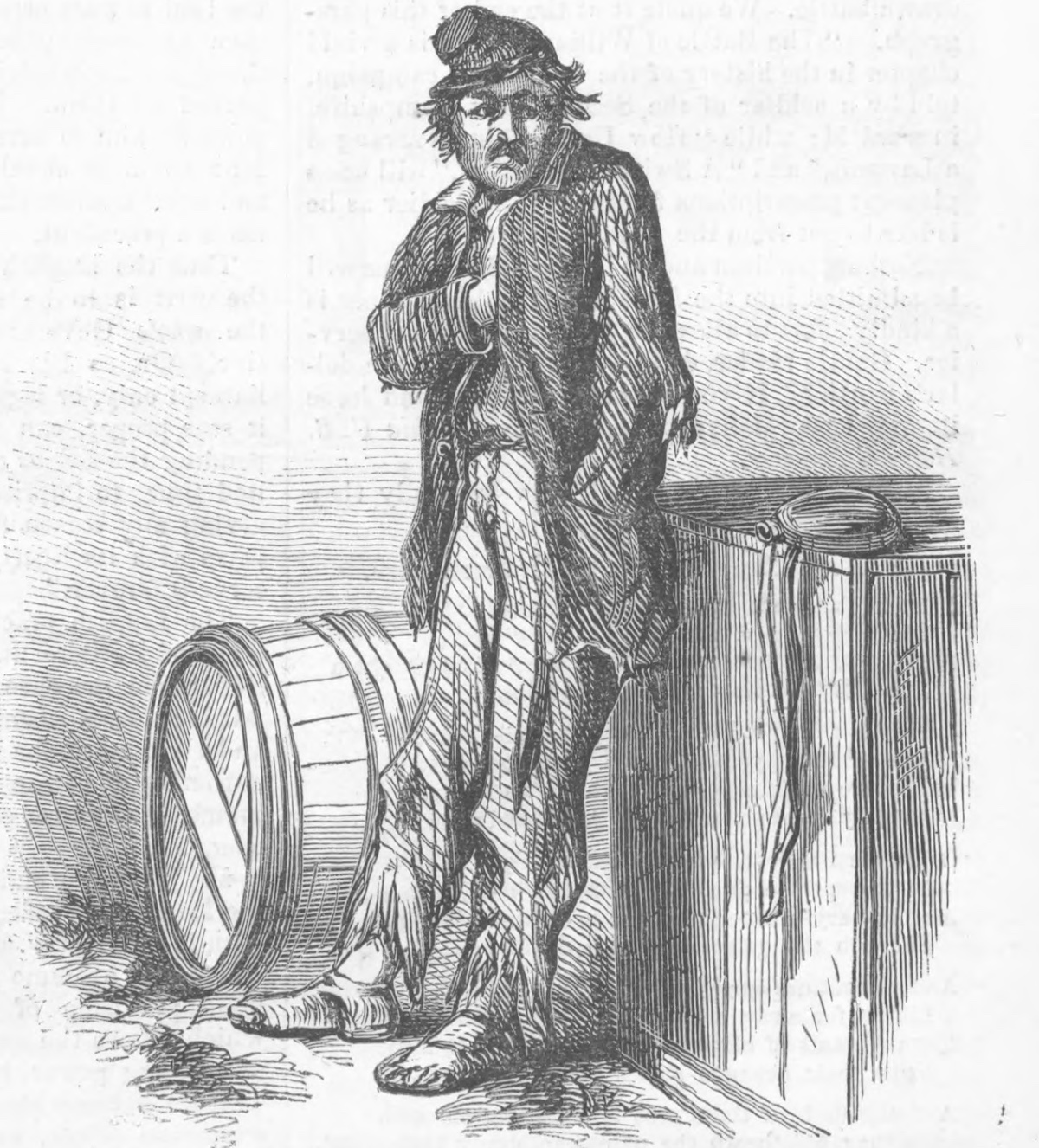
On March 28, 1863, Harper’s Weekly published Alfred R. Waud’s description, and associated illustration, of an army straggler—a class of soldier encountered repeatedly during the conflict by the famous sketch artist. It follows, in full: This sketch, taken in a little country store, is a fair representation of a class which increases with great rapidity when the army is on the move. With worn-out clothes, mournful looks, and dirty persons, they beg or steal as occasion offers, carefully avoiding their regiments, where they can get all needful supplies, for fear they should be given something to do.
They generally travel in little squads, some of whom have thrown away or sold their arms and knapsacks—sleeping in barns or camping out in by-places, for which the modern shelter-tent affords great facilities, being so easily transported and pitched. Sometimes they want for food, but more often live on the fat of the land, begging or buying bread, and stealing poultry, meat, vegetables, and so forth. Where it is safe they do a good deal of bullying; in the vicinity of guards they assume a dejected air, usually counterfeiting lameness to get the charity of country folk.
A more efficient provost guard would remedy this crying evil in the army, it being a noticeable fact that not till after a new country has been subjected for days to pillage at the hands of straggling scoundrels is any effort made to do away with the evil, although a private citizen is liable to arrest or detention in the most absurd places.

